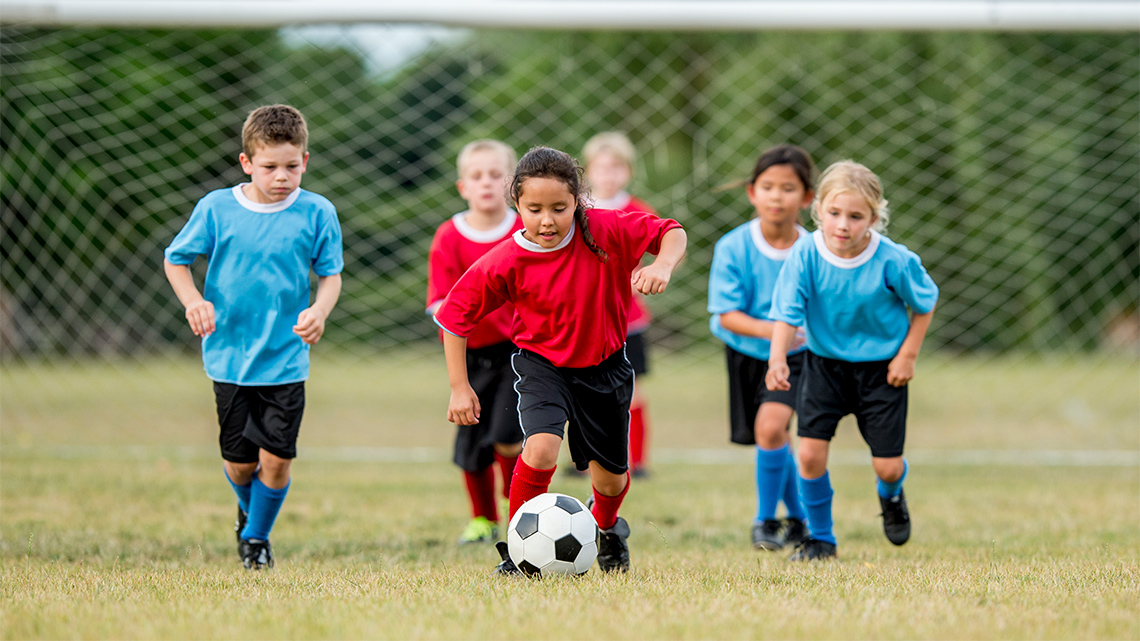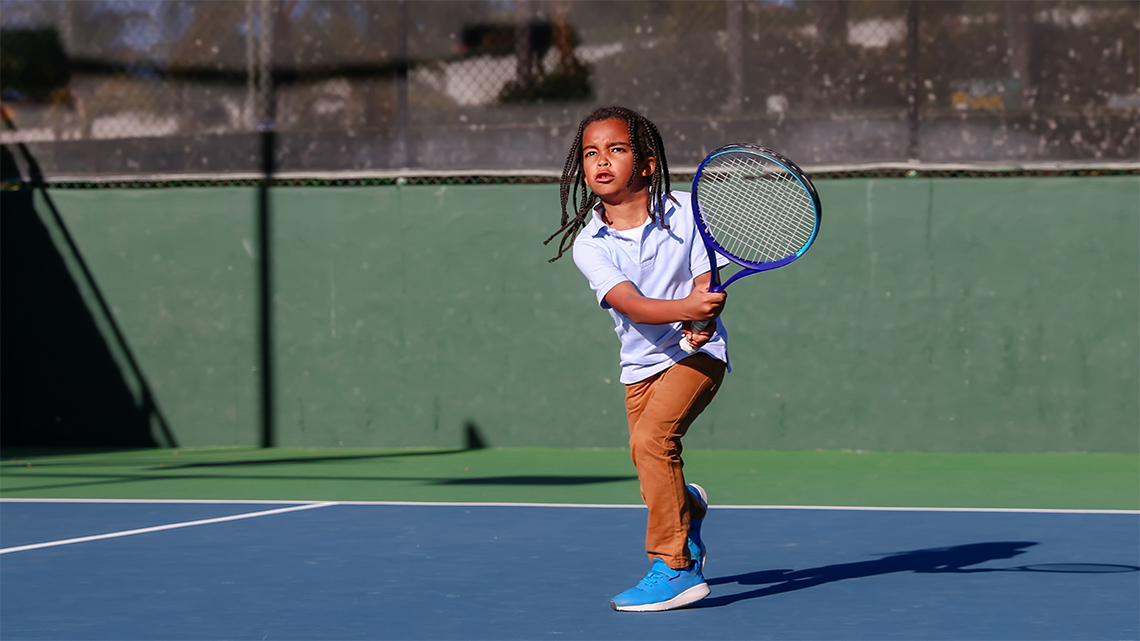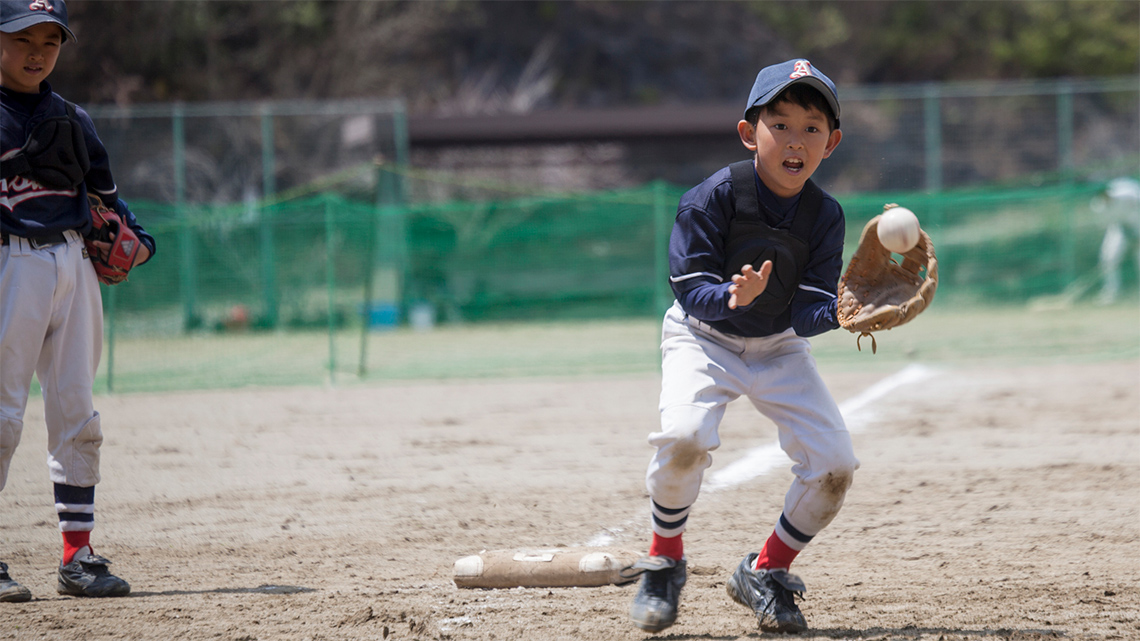Minds On
Tactics
Tactics are simple strategies or skills we use to reach a goal in games and activities.
For example:
- be in a ready position when playing tag to move quickly and not get caught
- move to an open space to pass a basketball to a team member
- communicate with the team that you are receiving the object so that you don’t bump into each other
Explore the following images of different sports and activities.
Brainstorm
Your tactics
After exploring the different images of sports and activities:
- Choose one of the images.
- Then, reflect on the different tactics or skills used for the activity or sport.
- List at least three tactics for the chosen activity.
Record your ideas in a notebook or another method of your choice.
Press ‘Example’ to access a sample tactic.
For example: In soccer, we can dribble and pass the ball to teammates in the boundaries.
Action
Are you ready?
For many sports and activities, there is a ready position. This is a position where the body moves and responds easily.
This is a ready position:
- knees bent
- feet apart
- head up
- arms out to balance
- attention is focused

Safety
Before you begin:
Warm Up
Warm up
Let’s begin with a warm up! Follow along with this workout video.
Check out this video entitled “Power Up: Superhero 4” to follow along with a superhero themed workout.
Striking with hands
Striking is to hit an object with equipment, or a body part, like your arms and legs.
Striking is a movement skill that is used in many sports like tennis, cricket, hockey, golf, badminton, and many more!
Let’s explore a few striking strategies:
- stand beside the target
- focus on the object/ball
- bring your hand slightly back or below the object
- contact with the object/ball with arms extended, and palms face up
A person striking a balloon with their hands. They have their palms face up and their eyes focused on the balloon.
Try It
Task 1: Keep it up!
Always be sure to do your safety checks!
With an object of your choice like a balloon/beanbag/ball/paper ball, practise your striking skills with the following activities:
- Strike the object with your hands. How many times can you strike the object before it reaches the ground?
- Strike the object with your hands while moving from one end of a room to
another.
Description
A person keeping a balloon up in the air with their palms facing up, while moving from one end of the room to another.
Challenge: Change the locomotor movement to either running, shuffling, or hopping while striking the object.
- Strike an object around a static object, like a chair, table, toy, etc.
Description
A person keeping a balloon up in the air with their palms facing up, while moving around a chair.
Striking with equipment
Let’s explore a few striking strategies:
- stand beside the target
- focus on the object/ball
- bring the bat/racket slightly back
- step forward and swing arm with bat/racket
- contact with the object/ball with arms extended
- swing and follow through
A learner stands with a racket at their side, focusing straight ahead at the ball. They bring the racket slightly back, step forward, and swing their arm with the racket,. The racket connects with the ball, while the learner's arms extend, swing, and follow through.
Task 2: Up and down
For the following activity, try to practise the striking with equipment tips.
Always be sure to do your safety checks!
Press the tabs to access this activity.
- an object that can be thrown (ball/balloon/cloth ball/crumpled paper/etc.)
- racket/paper plate/paddle/etc.
- If possible, move to an open space and stay in one place.
- Take the object and place it on the racket/paper plate/paddle/etc.
- Toss the object up and use the racket/paper plate/paddle to strike it upwards. How many times can you strike the object before it reaches the ground?
Challenge: Choose a locomotion of your choice and try moving around while tossing the object and striking it
A person using a racket to bounce and keep a paper ball up in the air.
Aiming
Aiming is focusing on a target or a point. For example, when playing soccer, your aim is the opposite goal post. Or, when you’re playing catch with a peer, your aim is around your partner who’s receiving.
Let’s explore a few tactics when aiming for a target:
- turn your feet and body to face your target
- focus on where you want to aim
- follow through with action (throw/kick/etc.)
- optional: communicate with those around you
Task 3: Aim where?
Choose one of the following options to access an activity, or explore both options and try each activity.
Always be sure to do your safety checks!
Option 1: Target toss
Press the tabs to access this activity.
- an object that can be thrown (ball/balloon/paper ball/cloth ball/beanbag/etc.)
- racket/paper plate/paddle/etc.
- bucket/basket/bin
- If possible, move to an open space, and place the bucket/basket a distance away from you (at least 1 metre) on the ground.
- Hold the racket/paper plate/paddle, and the object and get in the ready position.
- Use the aiming tactics and strike the object towards the bucket/basket. Continue steps 2 and 3 for ten aims.
Challenge 1: Try step 3, but move to a different position, like farther away or closer to the bucket/basket.
Challenge 2: Strike the object twice into the air before aiming towards the bucket/basket.

Option 2: Target pass
Press the tabs to access this activity.

- an object that can be thrown (ball/balloon/paper ball/cloth ball/beanbag/etc.)
- bucket/basket/water bottles
- If possible, move to an open space, and place the bucket/basket upside down, or place the water bottles on the ground.
- Move at a distance away from the bucket/basket/water bottles (at least 1 metre).
- Place the object on the ground and aim towards the bucket/basket/water bottles.
- Use your feet to strike the object towards bucket/basket/water bottles and try to knock them down. Keep trying until all objects are struck.
Challenge: Move at a farther distance away from the bucket/basket/water bottles (at least 2-3 metres).
Pause and Reflect
Pause and reflect
After the aiming activities, reflect on the following:
- Which tactics did you use for either or both activities?
- Was it easier to strike with equipment or with your body? Why do you think so?
- Did you find it easier to throw/kick from close or from far?
Record your ideas in a notebook or another method of your choice.
Fielding
Fielding is an action after a ball or an object has been struck. To field, you will collect the ball or object.
Tactics for fielding:
- be in a ready position
- focus on the object or ball after it has been struck
- move towards the object
- collect or catch the object
- Key tip: it’s easier to move towards the object, rather than over your body. So, move your body in front of the object.
Task 4: Throw and field
With an object of your choice like a balloon/beanbag/ball/paper ball, let’s practise your fielding skills with the following activity.
Always be sure to do your safety checks!
- Move to an open space and be in a ready position with the object.
- Throw the object up and at a short distance, or across the room.
- Focus on the object, move towards the object, and try to catch it or collect it.
A person throwing a balloon forward and then catching it.
Challenge: Change the locomotor movement to either running, shuffling, or hopping while fielding the object.
Cool Down
Loco-slow
- Choose a locomotion of your choice (walk, jog, shuffle, skip, etc.).
- Move around slowly around the room or your space while doing any of the
following:
- touch shoulders with hands, then reach up over the head 10 times
- wave arms from side to side and forward like a tree 10 times
- raise knees slightly, then take 10 giant steps in slow motion
Consolidation
Mix and match
Let’s match the tactic with the similar sport.
For each image, select the corresponding tactic.
Knowing, using, and practising simple tactics help you become more successful at the activity, and builds your confidence!
Make a video!
Choose one of the tactics you learned about and make a demonstration video, poster or info-graphic.
Make sure you include:
- an explanation of what your body is doing
- why you are doing it
- the steps you are taking
- what you are hoping to achieve
Share your work with a partner, if possible.
Reflection
How do you feel about what you have learned in this activity? Which of the next four sentences best matches how you are feeling about your learning? Press the button that is beside this sentence.
I feel…
Now, record your ideas about your feelings using a voice recorder, speech-to-text, or writing tool.







